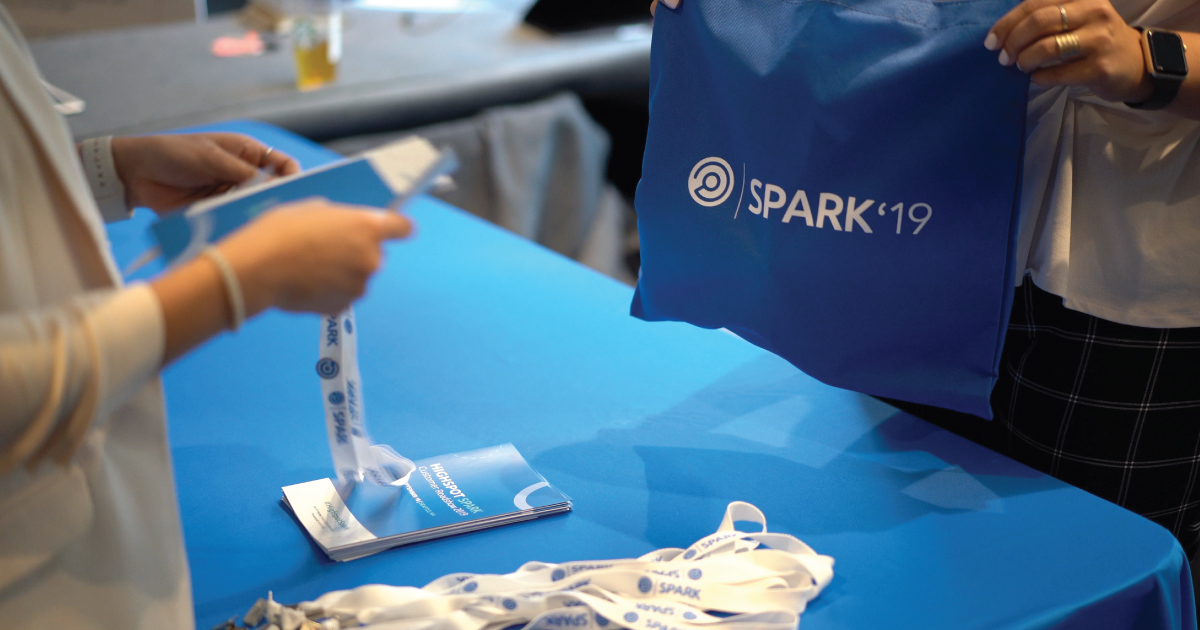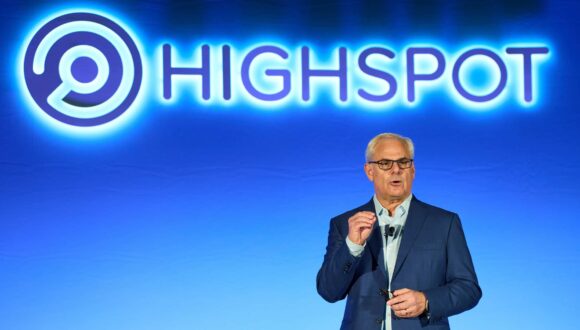After stepping into The Standard at High Line NYC, Alyce Bernstein, a marketer at Euler Hermes, was hoping to walk away from Highspot Spark with a handful of best practices and new industry connections. What she got was much more.
“I have filled multiple pages in a notebook with ideas,” she told our team afterward.
Alyce’s experience was no happy accident — Highspot Spark is an annual customer roadshow designed to help sales, sales enablement, and marketing leaders learn from one another through a community of enablement experts.
And learn they did. Four cities, more than 30 sessions, and hundreds of “learn-it-all” moments later, customers returned to their day-to-days armed with real-world best practices from their peers.
If you couldn’t attend, don’t worry. We’ve compiled a number of learnings that surfaced throughout conversations at Highspot Spark for you to explore and put into practice.
Set the Right Goals for Meaningful Analytics
“If you’re not measuring your contribution to the business, then you’re simply providing a service.” This insight was the biggest takeaway for Elise Hauser, a product marketing manager at inMotionNow.
And she wasn’t alone. The need for ROI has given new impetus to demonstrating business impact with analytics. With Highspot, data on content consumption is easy to access, but several customer questions centred on how to leverage it.
Drawing insight from analytics first requires what our Chief Solution Architect, Oliver Sharp, calls “specific, pointy goals.” As opposed to broad, generic objectives, a hyper-specific goal makes it easier to pull insights from data, and in turn, take meaningful action.
During his keynote, Oliver shared an example of a measurable goal: “We’d like to see 90% of our enterprise account executives utilise a new customer story linked within the enterprise product launch sales play.” With a goal like this, you’re tracking a specific action tied to a sales outcome for a relevant audience. When you view your analytics, you’ll be able to say whether or not the asset and guidance you provided enabled the rep to close a related deal. If successful, you know to replicate for future plays; if not, you know to iterate. Now your analytics are both actionable and strategically linked to greater business outcomes.
Draw Boundaries to Stay Strategic

On a job description, “other responsibilities as assigned” is often listed last. But for sales enablement professionals, these additional projects can quickly become their whole job. Highspot Spark attendees noted that volunteering to tackle minutiae can weigh down an enablement program. The best protection against this? Boundaries.
As panelists from Dun & Bradstreet and Grancius explained during a fireside chat, boundaries protect you against random requests. There are many ways you can draw the line. Most customers have built formalised charters to clearly outline areas of responsibility. These charters often include:
- Team mission statement
- Individual roles and responsibilities
- Short and long-term objectives
- Key metrics and reporting cadence
Panelists also recommended examining your org chart. Leadership initiatives will have a trickle-down impact on your priorities — a sales enablement team that reports to marketing has a very different function than one that reports to sales.
However you choose to approach it, the right guardrails will allow you to focus your enablement efforts on actions that truly move the needle.
Uplevel Your Program with Small Wins

One thing our customers all had in common were seemingly endless to-do lists of enablement activities. While large initiatives, like comprehensive onboarding, are important, they can also overwhelm and dominate so much that smaller tasks slip through the cracks. Many attendees found small victories can leave a big footprint.
Kendra Pecan, a senior marketing project manager at Amplitude, has prioritised creating a style guide for Highspot SmartPage creation. Though it may seem small, Kendra knows a consistent look and feel goes a long way in terms of providing a cohesive brand experience, earning prospects’ trust and driving internal platform adoption.
She also suggested finding your internal champions and building relationships with them. “Having salespeople on your side can do a lot to drive cross-team alignment,” she said. Marketers should routinely sit in on sales meetings, as some customers suggested, or simply grab a coffee to hear about a seller’s work — not only does a deeper understanding make you a better marketer, but taking the time to demonstrate support speaks volumes.
Take Advantage of the Sales Enablement Community
Customers swapping stories and exchanging ideas was a tangible demonstration of how critical community is to sales enablement success. As pioneers advancing the rapidly expanding sales enablement category, professionals rely on each other for best practices, support, and advice.
Shawn Pillow, director of sales enablement at Granicus, put it best: “The most valuable part of the Spark event was hearing about how companies that are scaling their enablement teams are solving some of the same challenges that my team is running into as we scale and mature our sales enablement function.”
As we continue to invent the future together, we hope you’ll join us at the Sales Enablement Soireé on November 21 in San Francisco and at the inaugural Highspot Global User Conference in 2020.




